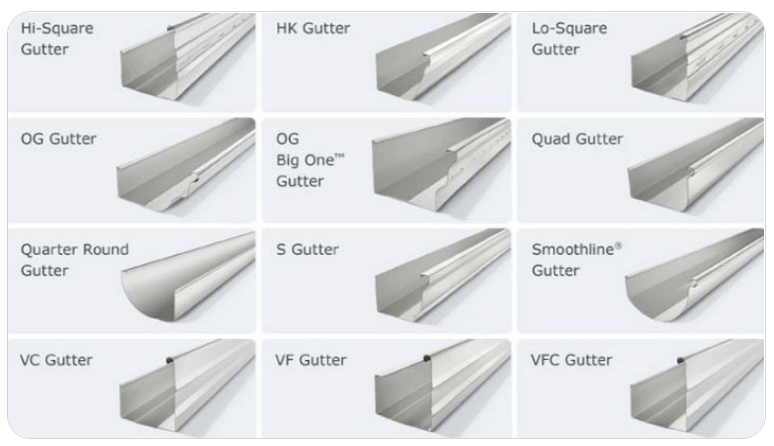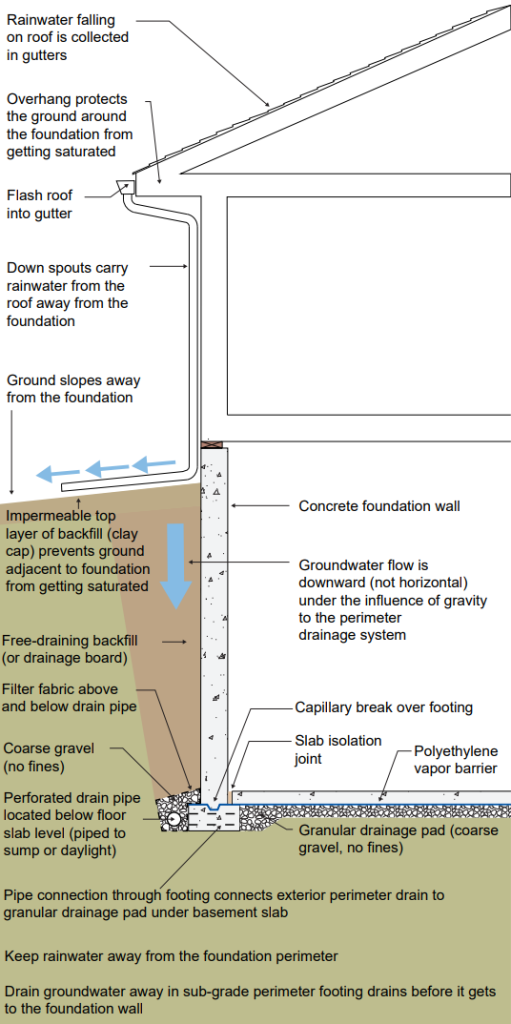When it comes to your home’s roof, it’s important to pay attention to the small details. Box gutter sizes are one of those details that can make a big difference in the overall look and feel of your home. They come in a variety of sizes, so selecting the right size for your needs is essential.
In this article, you’ll learn more about box gutter sizes and how to determine which size is best for you. You’ll get an understanding of factors like rainfall intensity, drainage area, roof pitch, gutter styles, downspout placement, gutter sizes, materials and more. Plus we’ll go over tips for proper maintenance and protection so that your box gutters will last longer and provide you with the benefits they were designed for.
So let’s dive into all things related to box gutter sizes!
Rainfall Intensity
You won’t want to miss out on learning about Rainfall Intensity! When it comes to calculating the size of a gutter system, rainfall intensity is an important factor.
This is because higher wind speeds and heavier volumes of rain will require larger gutter sizes in order to properly channel away water from your home’s foundation.
To calculate the right gutter sizes for your system, you need to know the square footage of your roof and the pitch or slope of its surface. You also need to understand local rainfall patterns as well as how much precipitation your area typically receives during heavy rainfalls.
K style gutter sizes are the most common type used today, and their capacity ranges from 2×3 inches (5×7 feet) up to 7×10 inches (18×25 feet). Downspout size should be based on both the roof area and rainfall intensity – a larger downspout may be necessary if your area experiences heavy rains.
By taking into account these factors when choosing box gutter sizes, you can ensure that you select one suitable for protecting your home’s foundation from water damage.
Drainage Area
It’s an absolute must to ensure that the Drainage Area is properly taken care of – it’s like a river running through your home!
When considering what box gutter sizes you need, you should consider the maximum rainfall intensity in your area, as well as the square feet of roof surface that will be directing rainwater into the gutter. The greater the maximum rainfall intensity or the larger your roof area, the bigger and stronger box gutters you’ll need for your home.
There are different options when it comes to box gutters which provide different water flow capacities depending on their size and material. It’s important to choose a box gutter with a capacity that can handle all of the rainwater coming off of your building without overflowing.

Roof Pitch
Knowing the pitch of your roof can help you determine what type of box gutter is right for your home. There are several factors to consider when selecting gutter sizes, such as roof pitch, rainfall intensity, gutter styles, and standard sizes available.
Here’s an overview:
- Half round gutters are usually used on pitched roofs with a pitch factor of 4/12 or less.
- Gable roofs and hip roofs that have a steep pitch factor (greater than 6/12) often require larger linear feet of the gutter compared to other roof types due to their increased capacity for rainwater runoff.
- Standard sizes range from 5 inches up to 8 inches in width depending on your roof’s pitch and rainfall intensity in the area where you live.
- Gutter styles also come into play when determining which size you need. Seamless aluminum half round gutters are the most popular option due to their durability and versatility for different roof pitches and rainfall intensities.
In conclusion, selecting the correct size box gutter depends on several factors like roof pitch, rainfall intensity, available standard sizes, and style options. So, make sure that you choose wisely!

Gutter Styles
Choosing the right gutter style for your roof will depend on factors such as pitch, rainfall intensity, and available sizes – so you’ll want to be sure to consider each when making your decision.
The size of gutters is determined by the inches per hour measurement of the local rainfall intensity. Common gutter sizes range from 5-inch, 6-inch, 7-inch, and 8-inch gutters.
The type of gutter used in residential homes is usually a 5 or 6 inch K-style gutter which is measured using a tape measure and typically overlaps crown molding which could affect the proper gutter sizes needed. It’s important to remember that 1 inch gutters are not suitable for heavy rainfalls or climates with high snowfall amounts; they may need a larger than 6 inch gutter to handle those conditions.
Additionally, installing a good quality set of Gutter Guards can help maintain proper flow and prevent clogging due to leaves and other debris.

Downspout Placement
You’ll want to strategically place your downspouts to ensure proper drainage and prevent flooding, so don’t forget this important step!
When selecting the placement of downspouts for your box gutter sizing, there are several considerations you should take into account. These include the roof’s drainage system, the capacity of the downspout outlet and extensions, as well as any custom-sized gutters or downspouts that may be needed. Furthermore, you’ll also need to consider the size of the discharge area for each downspout and its distance from other buildings or structures.
When deciding where to place your downspouts for your box gutters, it is important to make sure that they are placed correctly to achieve optimal performance. This includes ensuring that all downspout outlets and discharges can handle the amount of water expected during heavy rains or storms.
Additionally, make sure that all custom-sized gutters and downspouts fit correctly within their designated space and can handle any potential overflow with ease.
Double-check that all components can handle potential overflow during storms.
To summarize:
- Make sure your roof’s drainage system can handle the water runoff from box gutter sizes
- Check the capacity of the downspout outlet & extensions before installing
- Consider the size & distance of the discharge area for each downspout
- Ensure custom gutter sizes & downspouts fit correctly into the designated space
- Double-check that all components can handle potential overflow during storms
Gutter Materials
When it comes to choosing the right gutter materials for your project, there are a few key factors you should consider.
For starters, if you’re installing larger gutters or extra downspouts, you might want to look into different styles of gutters – such as K-style gutters – and their sizes. Commercial box gutters can also be a great option for large projects due to their increased capacity and standard gutter dimensions.
When determining the type of gutter system that best suits your needs, pay attention to the size of rectangular downspouts that come with each type and find out what kind of materials they’re made from.
The quality and material of your gutter system will play an important role in how effectively it handles water flow over time.
Benefits of Gutters
Installing the right gutter sizes can save you time and money in the long run, giving you peace of mind that your property is well-protected from water damage. The size of the gutter and inch k style gutter you choose will depend on several factors, including cost, estimate, rain gutters, seamless gutter, the volume of water, diameter, and common sizes.
A common gutter style is usually 5 inches wide, while 6 or 8-inch sizes are available for larger roofs. The length of the roof should be measured to get an accurate estimate of the materials needed and installation cost. When deciding on a size, it’s important to take into account the volume of water runoff during heavy rains.
If the gutter sizes aren’t able to handle this amount of water, then they must be sized up accordingly or additional downspouts may need to be installed along with a larger capacity gutter system. Taking these considerations into account will help ensure that your home has enough protection against water damage caused by heavy rains or melting snow.
Gutter Maintenance
Keeping your gutters clean and free of debris is essential to maintain the health of your home’s roof and foundation. This process is particularly important for commercial buildings since their gutter systems are typically larger than those in residential buildings.
It’s necessary to use the correct gutter sizes for your building – generally between 10-20 feet per section, depending on the shape and size of the building – as well as the correct standard downspout size. When installing gutters, it’s important to pay attention to measurements regarding types of gutters as well as how many feet of gutter you’ll need.
Clogged gutters can be a major issue if they’re not regularly maintained, so it pays off to invest in quality materials that’ll last longer and require less maintenance throughout their lifetime.
Gutter Protection
Now that you know how to maintain your gutters, let’s discuss gutter protection.
The most common types of rectangular gutters are five-inch K-style gutters and five-inch half-round gutters. Both of these types of gutter systems can benefit from the added protection of fascia gutters or copper gutters.
These protectors provide an additional layer between the elements and your home’s foundation. If you’re not sure which type is best for your home, consider consulting with a professional who specializes in larger gutter sizes.
They may also be able to recommend various inch gutter guard solutions such as K-style seamless gutters or rounded gutters to ensure maximum protection for your home’s foundation.
Frequently Asked Questions
What is the most common size for box gutters?
The most common box gutter sizes is 4 inches. This size provides enough room to collect and disperse rainwater while still allowing the gutter to blend in with the rest of the roofline without being too bulky or noticeable.
Depending on your roof’s pitch, you may need a larger or smaller gutter sizes to accommodate more water flow, but 4 inches is generally considered standard.
Are box gutters better than other types of gutters?
Box gutters are often seen as the superior type of gutter system due to their ability to handle large volumes of water. They’re typically made from either aluminum or steel, with the former being more lightweight and easier to install.
Box gutters have several advantages over traditional open-style gutters. They can better withstand high winds and strong storms. Additionally, they help prevent the build-up of debris by keeping it contained in the box rather than allowing it to accumulate on top.
For these reasons, many homeowners favor box gutters over other types of systems when it comes to protecting their homes from water damage.
How much do box gutters typically cost?
Box gutters typically cost between $4 and $8 per linear foot, depending on the size of the gutter. The price can also be affected by factors such as material type (aluminum, copper, vinyl, etc.), installation complexity, and location.
You’ll want to consider these factors when estimating your budget for a box gutter project.
What are the installation requirements for box gutters?
Installing box gutters is a task that requires precision and attention to detail. Properly installed box gutter sizes can manage up to 99% of water runoff.
To ensure a successful installation, there are several requirements you should consider. First, make sure the gutter sizes and style match the roofline of your home. Then, use sealant or screws to secure the gutter in place along the edge of the roof and around any corners or edges as needed.
Finally, you must install a downspout for proper drainage away from your home’s foundation. With these steps completed in full, your box gutters will be ready for use!
How often should box gutters be inspected and maintained?
You should inspect and maintain your box gutter sizes at least once a year. This helps ensure they’re properly functioning and any potential damage or weaknesses can be identified and addressed before they become major issues.
It’s important to check for loose connections, clogs, rust, rot, or any other visible signs of deterioration. Regular maintenance can help extend the life of your box gutters.
Conclusion
You’ve made the right choice in choosing gutters for your home. Not only do they add to the aesthetic appeal of your home, but they also protect it from water damage and other hazards. Plus, with proper maintenance, gutters can last a lifetime—saving you time and money in the long run.
To make sure you get the best fit for your house, consider factors like rainfall intensity, drainage area, roof pitch, gutter style, and material before installation. And don’t forget about downspout placement—it’s an essential component of any effective gutter system!
So if you want to keep your home safe from water damage while adding value to it at the same time, look no further than installing gutters: a wise investment that pays off in spades.



4 thoughts on “Box Gutter Sizes; 4 Important Tips To Help You”